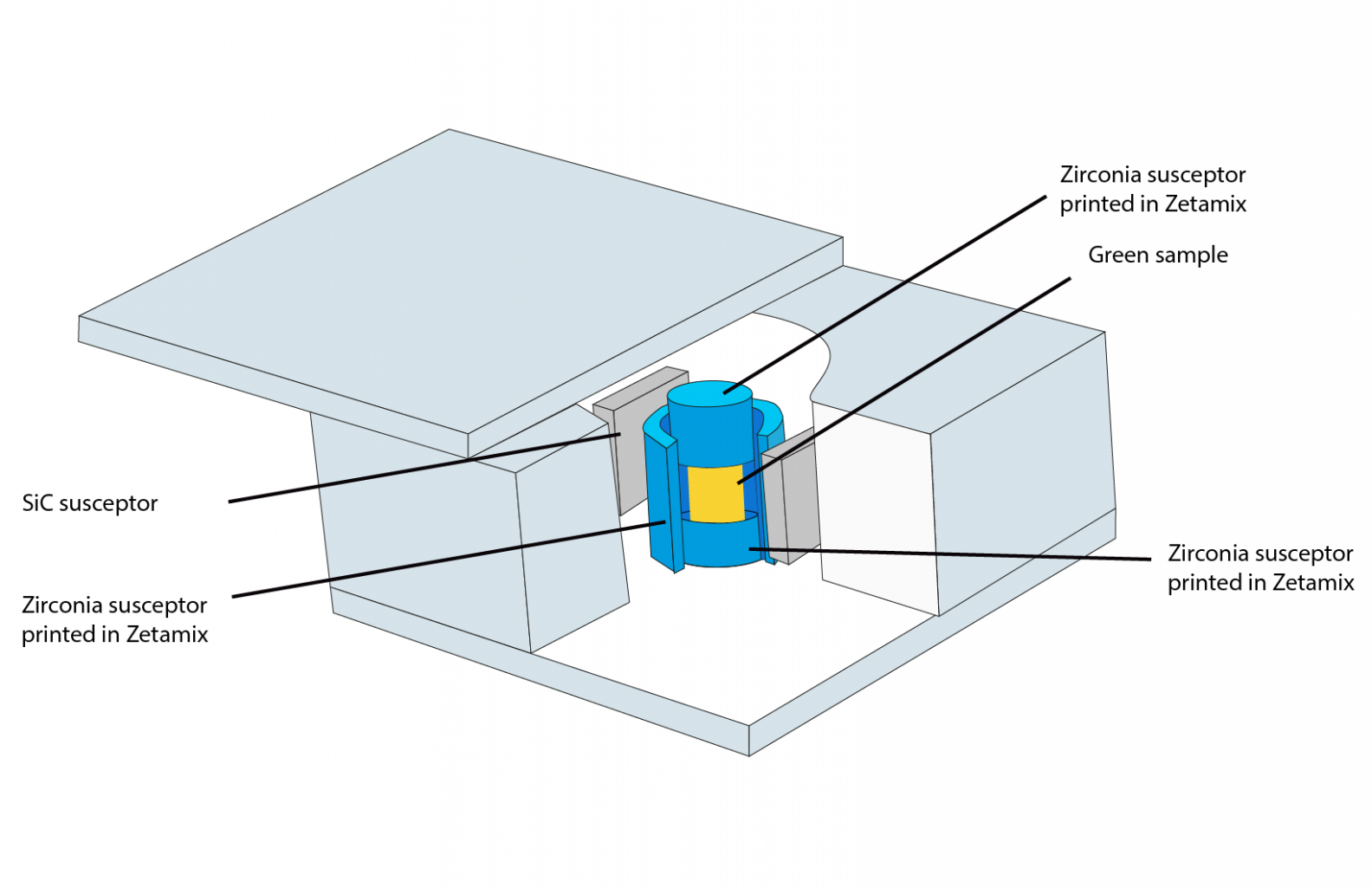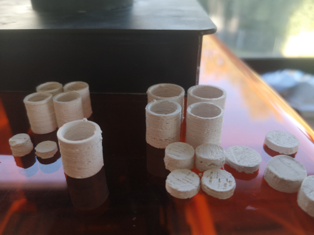CRISMAT laboratory is a French Mixed Research Unit (UMR 6508) under the triple supervision of CNRS, ENSICAEN and the University of Caen Normandy. This laboratory is specialized in crystallography and materials sciences. One of the research groups is working on the synthesis and the optimization of the functional and structural properties of ceramics materials, but also on the improvement of sintering and development of innovative shaping processes. Recently, the development of flash microwave sintering as emerged. In this context, they use Zetamix 3D printing to create specific major component: Zirconia susceptors.

Microwave sintering, what does it mean?
Microwave heating comes directly from the interaction of the material (based on its dielectric properties) with the electromagnetic radiation. This technology enables to heat up and sinter a material in a really short amount of time. Microwave heating is also known to be a volumetric heating. Thus, the sintering process takes only a few minutes against several hours, or day, by conventional radiative heating. To obtain a more homogeneous sintering of the material, it is usual to use susceptors around. Those materials interact and heat preferentially with microwaves and contribute to heat the sample by radiation, leading to a hybrid microwave heating.
Figure 1 : Design of the sintering cell

What is the problem?
To perfom flash microwave sintering, the densification of the material has to be complete in less than 60s. The required conditions in terms of temperature and heating rates imply a perfect control of the thermal gradients. To do so, the laboratory developed a cascade strategy using two susceptor materials: Sillicon carbide (SiC) and zirconia (ZrO2). First, the microwave initiates the heating of SiC plates, which in turn heat ZrO2 plots and cylinder. This chain reaction allows the sintering of any material in only a few seconds.
However, this process may be particularly extreme and samples may be damaged due to the thermal gradients. To avoid this issue and reduce thermal cooling fluxes, the zirconia susceptor has to perfectly fit the sample. Ordering a customized cylinder by external sources would be too expensive and the lab has to find an alternative.
Figure 2: Zirconia susceptors 3D printed using Zetamix filament.
Solution
CRISMAT laboratory quickly found a solution to this issue: create their own susceptors thanks to Zetamix 3D printings. Indeed, Zetamix filament line count several technical ceramics including zirconia.
Figure 3: Hot spot without susceptor vs Homogeneous heating with printed susceptors
Thus, by combining the flexibility and the freedom of shape of FFF and the properties of Zetamix filament, the lab easily reached their goals and created susceptors perfectly adapted to the sample to sinter.